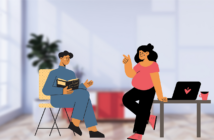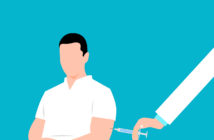A lot of people suffer from leg and vein problems that can be painful and uncomfortable. It’s important to know the type of problem you’re dealing with in order to find an effective treatment for your specific needs.
Here we’ll break down the different types of leg and vein problems, so you can figure out what is going on with your body and how best to treat it.
Varicose veins
Varicose veins are the most common type of vein problem. They often develop during pregnancy or in people who’ve recently had a long period of immobility such as sitting on a plane for a long time. The valves in your leg veins don’t function well when you’re standing, which allows blood to pool and collect in your legs – causing varicose veins.
Varicose veins are swollen and usually dark purple in colour, which is why they’re often referred to as “spider veins.” They can be unsightly but don’t usually cause pain unless they become twisted or inflamed.
The best way to treat them is with sclerotherapy, a type of injection treatment that involves injecting a sclerosing solution directly into the affected veins. Such treatments can be accessed using this Vein Doctor Directory which can help you find places to get the treatment you need. Sclerosing treatments shrink and close the veins off, eliminating the pooling of blood in your legs.
Spider veins
Spider veins are similar to varicose veins, but they are smaller and closer to the surface of your skin. They commonly appear on the legs but can sometimes be found on the face as well. Like varicose veins, spider veins usually develop from poor circulation that is made worse by standing for long periods of time or being immobile for a long period of time. They are usually painless but can be irritated or itchy in some cases.
Spider veins are typically treated with sclerotherapy as well, but they may also respond to other treatments like laser therapy and intense pulsed light (IPL) therapy depending on the size, location, and severity of the spider veins.
Venous insufficiency
This is where your veins are not able to pump enough blood back up to your heart, so it pools in the lower part of your body.
It’s usually a chronic condition that develops over time and can lead to other complications such as skin ulcers if left untreated. Those with venous insufficiency typically have thickened or hardened valves and swollen legs because of poor blood circulation.
Venous insufficiency usually responds well to compression therapy. This is a treatment that uses special stockings or wraps applied to your legs in order to increase the flow of blood back up towards your heart. Compression therapy is usually used in conjunction with other treatments like sclerotherapy and laser therapies when necessary.
Chronic venous insufficiency (CVI)
CVI is a more advanced version of venous insufficiency that eventually leads to tissue damage if left untreated. It’s usually triggered by other health conditions such as diabetes, heart disease, or obesity, but can also be caused by injuries or surgeries. Symptoms include dry and itchy skin, hardening and thickening of the skin due to poor circulation, ulcers, and sometimes skin lesions.
If you have CVI, it’s important to seek treatment as soon as possible in order to avoid more serious complications. Treatments involve improving the flow of blood through your veins by removing any blockages or narrowing of your leg veins. This can be done with compression therapy alone, sclerotherapy injections, or sometimes surgery.
Varicose veins and other vein problems are a common complaint among many people, but they usually respond well to treatment as long as they’re caught and treated early. If you have leg pain, swelling in your legs or ankles, or experience discomfort while standing or exercising, then you should make an appointment with your doctor.
Deep Vein Thrombosis
Shortened to DVT, this is a blood clot in one of the deep veins in your body, usually in the calf or thigh. It can cause pain and swelling which will gradually get worse if left untreated. It can also be accompanied by other serious conditions like pulmonary embolism or heart attack. Treatment options include anticoagulants such as heparin and warfarin, or clot busting drugs like tenecteplase.
Prevention of leg and vein issues
The saying goes, prevention is better than cure. There are steps you can take to prevent leg and vein issues.
- Elevate your legs/feet when sitting for long periods of time or after exercising. Do not cross your legs either.
- Drink plenty of water to improve blood circulation and help reduce your chances of having vein issues.
- Do not put unnecessary strain on your legs or perform heavy lifting without wearing the appropriate supports, both which can lead to leg and vein issues.
- Exercise regularly to strengthen your heart and body’s muscles,
There are many different types of leg and vein problems that can affect your daily life. Fortunately, it is easy to treat these conditions with the right diagnosis from a physician or medical professional who has experience treating patients with similar issues.





